Thailand and Laos
Blog South East Asia -Thailand and Laos. written on: 8-02-2024
Overview day 442 - 462
18 january 2024 - 8 february 2024
859
Km’s Cycled
10.080
Altimeters
15
Stages
0
Defects

Last days in Thailand
In Chiang Mai we take it easy. At least that’s what we’re trying to do. We explore the city and take a nice walk up a mountain to a temple. Chiang Mai has more than 300 Buddhist temples, so there is a lot to see. After a day of exploring the city and seeing a lot of temples, we decide to go hiking the next day. The hike starts a few kilometers from the center, so we start with a bike ride. The hike goes to a temple (no surprise in Thailand) and past another temple (no surprise either). We find these temples even more beautiful than those in the center of Chiang Mai. The location and the nature around it makes it a beautiful sight.
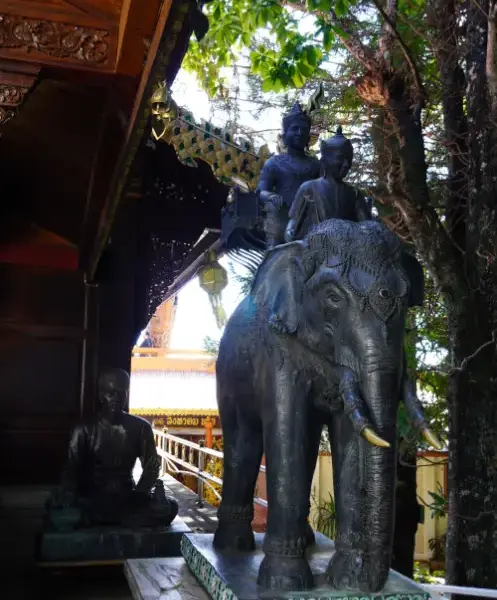
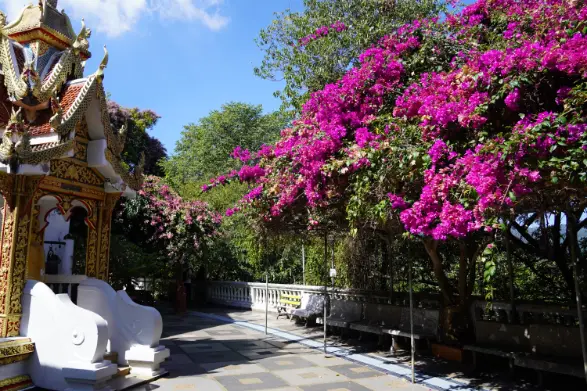
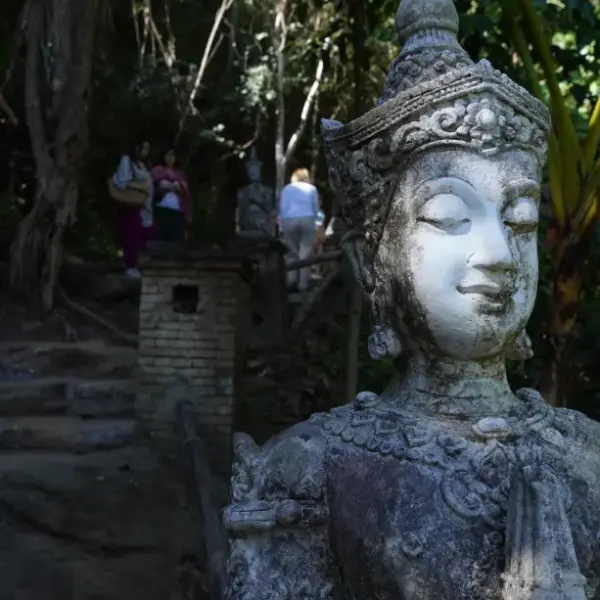
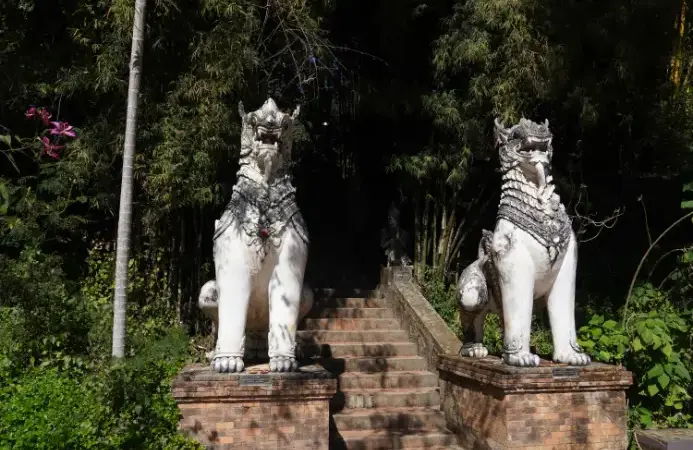
Towards the Laotian border
And then we start the last kilometers of Thailand towards the border with Laos. The route contains 1 big mountain stage: a climb of 18.8 km long, with about a kilometer of elevation. We start early and start in good spirits. With the experience of the previous climb in mind, we expect that some parts will be too steep to cycle. But in the 18.8km only Isabel has to push her bike once, the rest is cyclable. And the views are beautiful again. At the top we hoped for a nice smooth descent but Instead of descending easily, we climb even more and more and even more, with the occasional short but extremely steep descent in between. After 30km we are finally down and it’s time for a late lunch.
All temples have their own style.
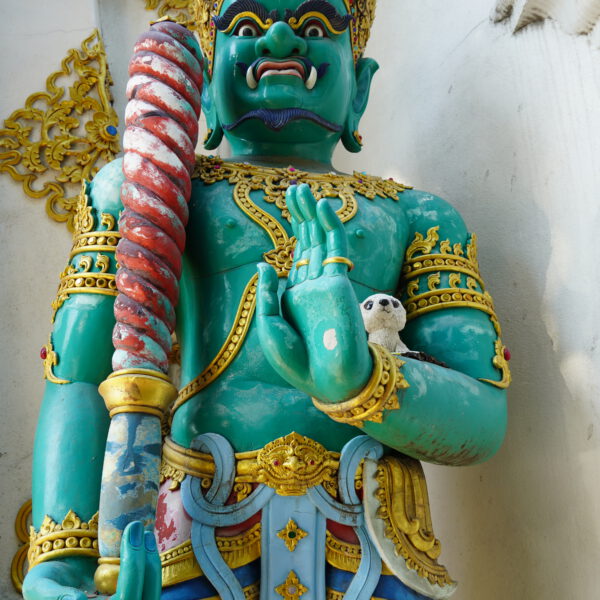
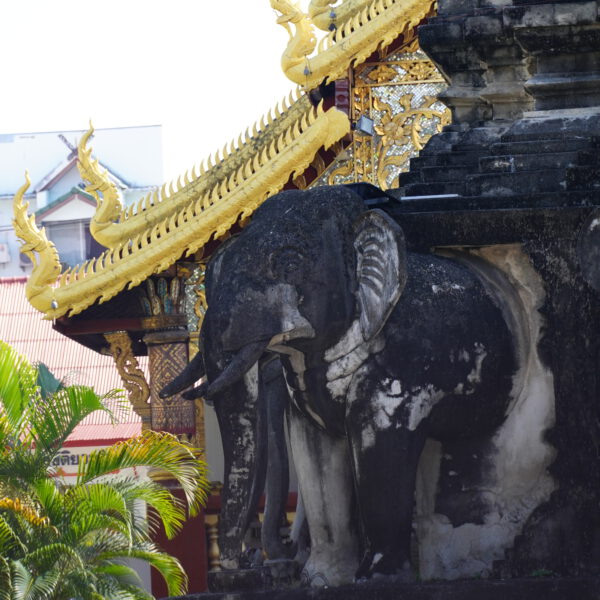

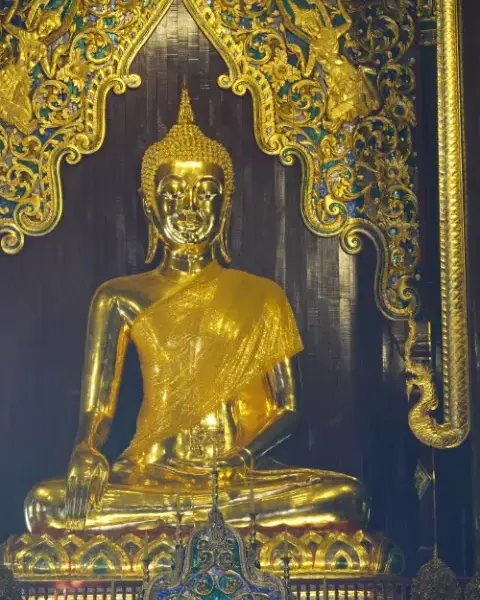
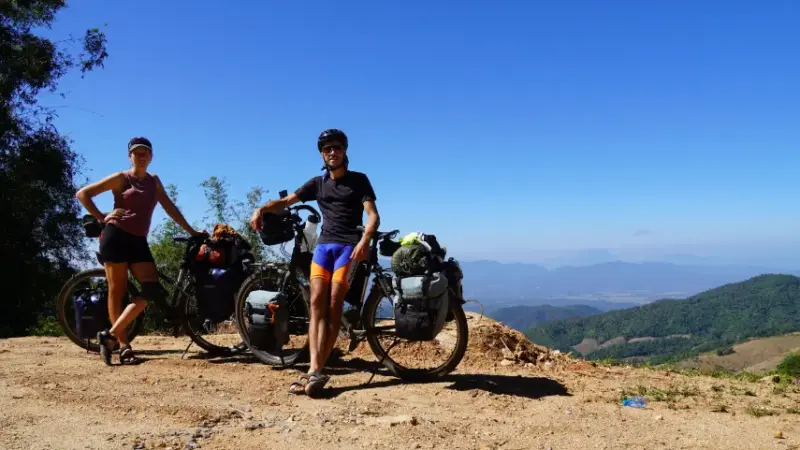
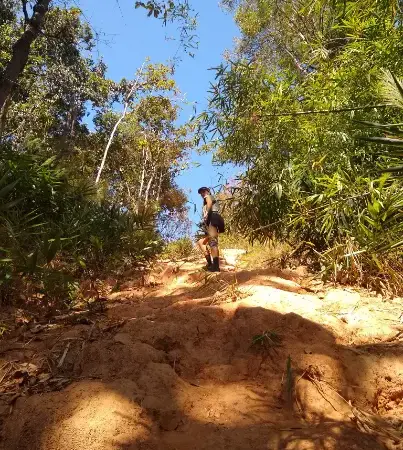
The white temple of Chiang Rai
In Chiang Rai we visit the white temple. An artistic building, completely white (again no surprise). The next day Isabelle doesn’t feel very well, so we do a short day so she can sleep in the afternoon. She clearly needed that, because she doesn’t wake up until it’s dinner time. In the meantime we are almost at the border with Laos. Our last night in Thailand we sleep 5km from the border and the next morning we cross the border early.
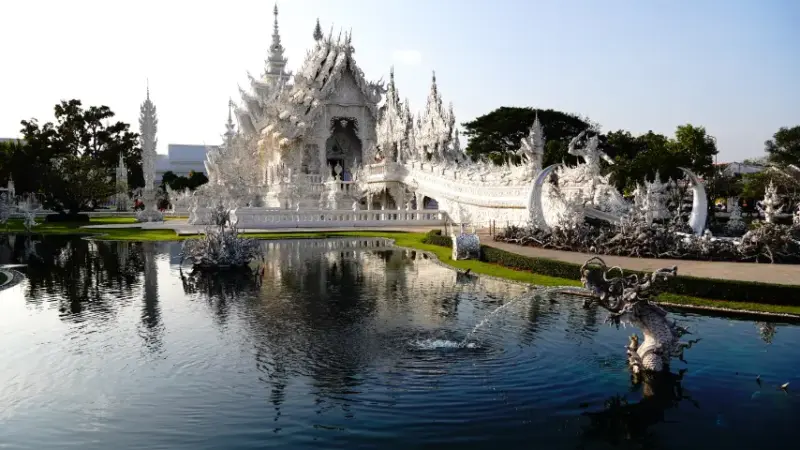
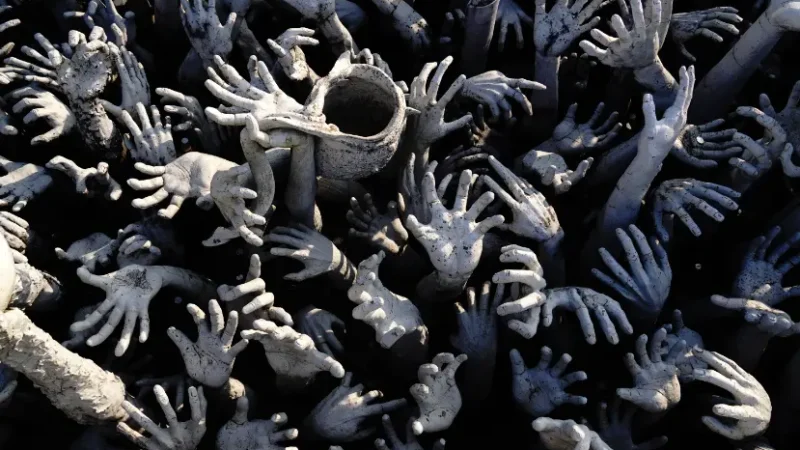

Slowboat to Luang Prabang
In Laos we are immediately confronted with the fact that everything takes a little more “effort”. It starts with the fact that we are not allowed to cycle across the border. We HAVE to go by bus, no matter what we try. Well then, 3 minutes by bus to cross a bridge and then we are at the Laotian border. We already have our e-visa in our pocket so we don’t have to worry about that anymore. We still have to pay the “stamping-fee” *sigh*, but we are happy that we have crossed the border. We cycle 10Km to the nearest town and exchange our money there, get a SIM card and buy tickets for the slowboat to Luang Prabang.
Overcrowded but jovial
We had heard a lot of bad stories about the boat and they are partly true. Leaving on time, forget it. But that in itself is not strange when you try to cram 200 people on a boat where there is room for 150. The tour takes 2 days with an overnight stay in Pakbeng in between. Fortunately, we were able to get seats both days so we don’t have to sit on the floor. The seats we are allowed to sit on are old car/bus benches that are places randomly in the boat. On day two we have to warn each other if we want to get up, because otherwise our bench will also knock the person who stays sitting on the floor. Furthermore, there is a friendly atmosphere in our boat. There are a lot of backpackers who like to drink a few beers and smoke a bit, but they don’t cause any nuisance (which is sometimes the case). Two days in the boat was more than enough for us, but we are glad that we have come this far into Laos already.
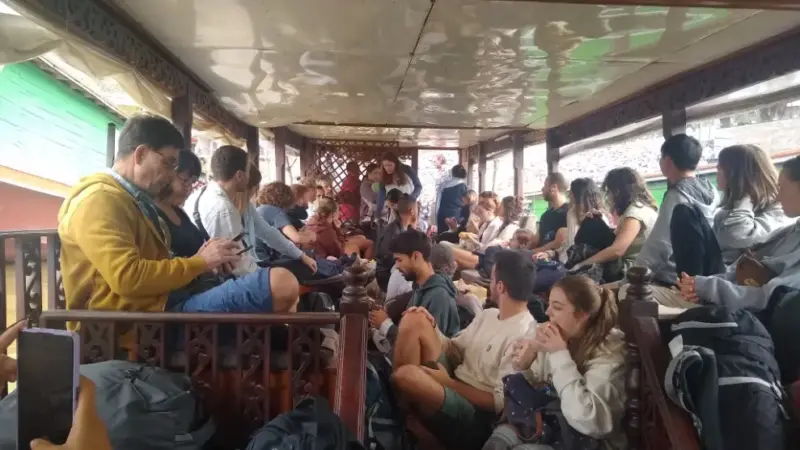

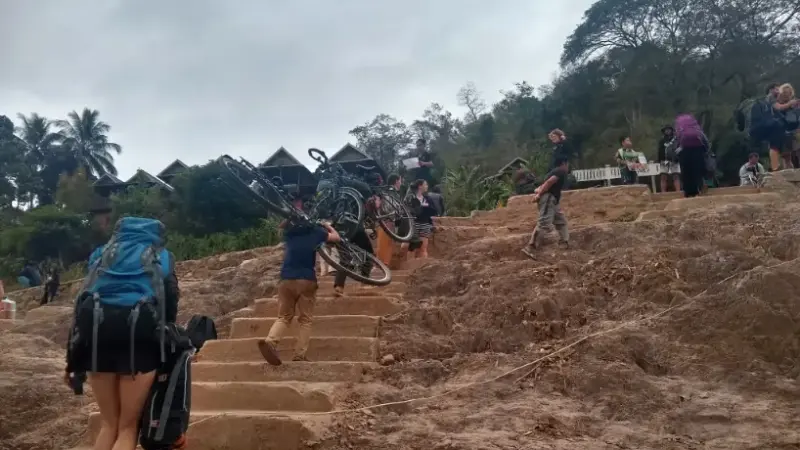
Luang Prabang
We stay in Luang Prabang for a few nights. We visit a beautiful waterfall that is 30Km out of town. A nice way to spend the day for us. Furthermore, Luang Prabang is known for the many monks who take to the streets early in the morning to receive their food from generous givers. An important tradition for the people of Luang Prabang.
When we leave Luang Prabang, we have been in Laos for almost 1 week but we are only starting our first real stage on the bike towards Vietnam. Had enough rest, time to get back on the bike! What immediately stands out is that Laos is a lot rougher. There is rubbish everywhere along the streets, many people are cooking on wood-burning fires along the street and the roads are full of potholes and cracks. We struggle change our mindset the first day. Maybe we have been too spoiled in Thailand.
Morning alms in Luang Prabang and Kuang Si waterfalls
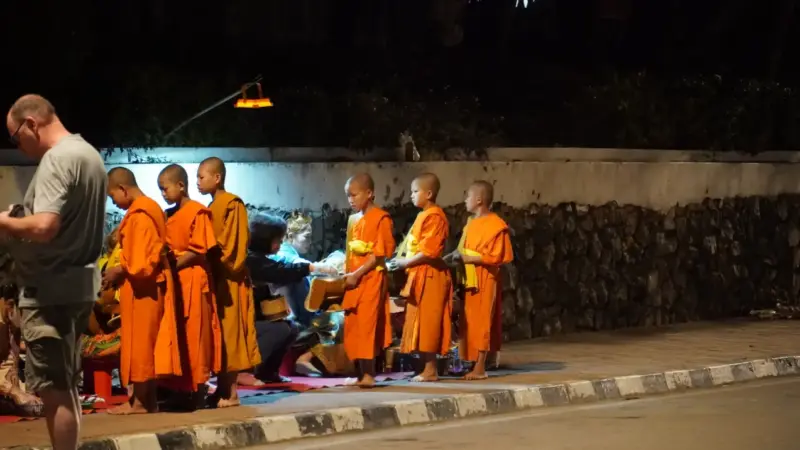

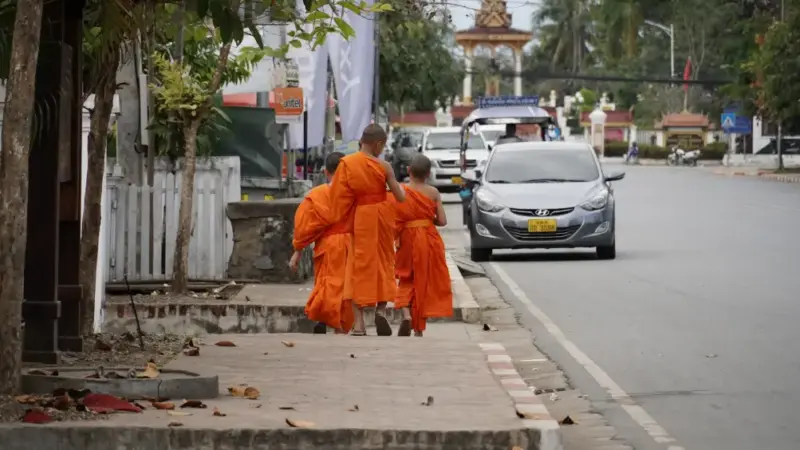
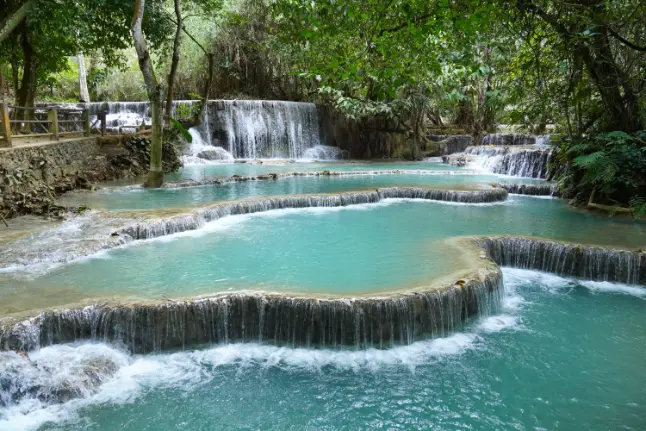
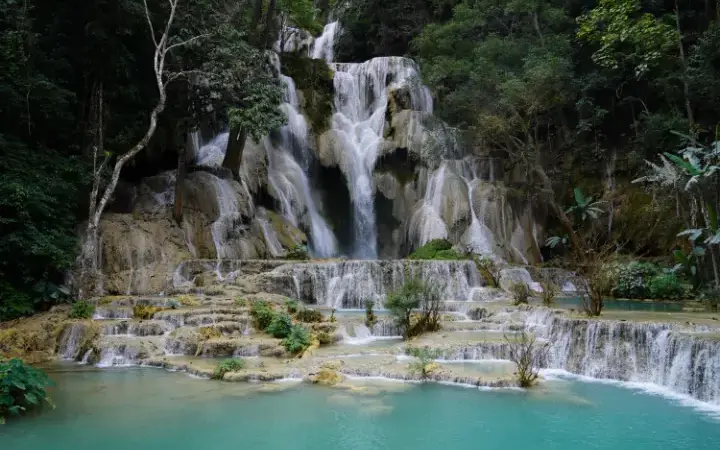
Scams and opportunism
What also doesn’t help is that so far we get the feeling that we are being scammed a few times every day. It often concerns just 1 euro or less, but we are annoyed just by the fact that people do it. With the principle. It started with the “stamping-fee” on the border, but that didn’t get much better after that. We agree on a price of 350,000 Kip over the phone and then we see 400,000 Kip on the bill. On the menu there is a price of 25,000 Kip but they ask 30,000 because we “got the old menu”. From now on, we will ask for the price first. But even that doesn’t always help. We order 2 dishes of 35,000 Kip each. The bill 140,000 Kip! “You ordered that, but we gave you something else” was the explanation.
Excuse me, sir, but you should have mentioned that before you gave us something random from the menu which we did not order. All kinds of things are tried and that is exhausting. On the other hand, the nature is incredibly beautiful. It takes some time to get used to the fact that the Laotians are a bit more opportunistic, but we find our way in that soon enough. The advice we got in Morocco still applies: “Be smart, always smile”. And that smile gets us a long way. They try to ask for more than the agreed price, but when we mention it, they don’t make a fuss about it.
And we are not the only ones who are “bothered” by opportunism. We hear countless stories of fellow travelers being scammed in every single way imaginable. So we will be a bit more wary in the coming days.
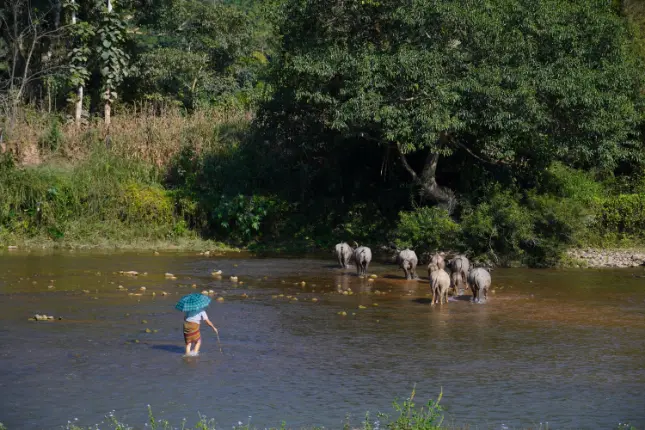
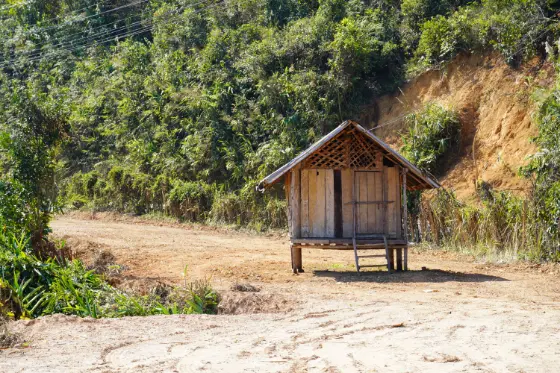
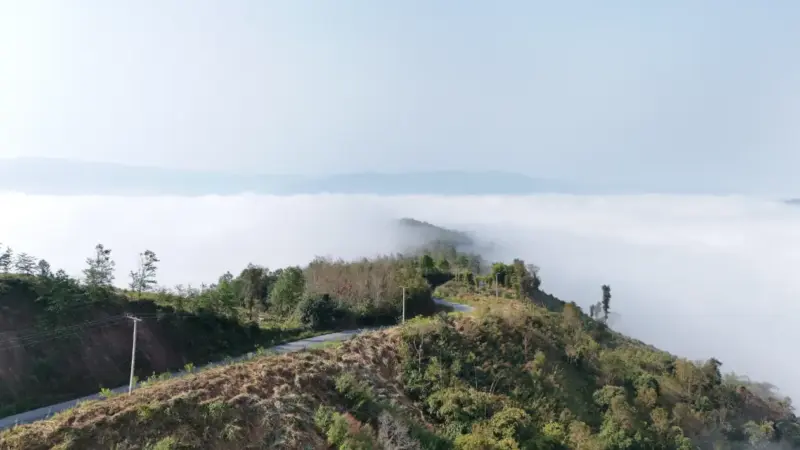
Nong Kiaw
But fortunately, from Luang Prabang it gets better for us.
Our first stop is Nong Kiaw. A tourist town where you can do a number of hikes to beautiful viewpoints. We’ll let the photos speak for us. We stay neatly on the path because Laos is still littered with unexploded bombs dating from the Vietnam War or rather “the secret war”. Laos is the most bombed country in the world. Something we certainly didn’t know yet. To put that in perspective, a planeload of bombs was dropped over Laos every 8 minutes over a period of 9 years. That amounts to about 270 million cluster bombs. Of those, it is estimated that one-third did not explode. In many places we see excavated bombs being used as decoration and along the road we keep being warned by signs.
Farang!
Although we still ask for the price in advance and a receipt after payment, to avoid hassle afterwards, it is all a lot friendlier. In many places we can pitch our tent for free at the restaurants where we eat and often refilling water is no problem at all. The roads are not as perfect as in Thailand, but we certainly can’t complain. The adults are a bit more reserved, but the children are very enthusiastic. When we are spotted, the first thing we often hear is “Farang! Farang!” with this all the children of the village are informed that two tourists are approaching on a bicycle. Then we are greeted with “Bye, Bye”, “I love you” and we hand out countless high-fives to the children who seem to come from everywhere. In any case, we feel welcome. We notice that there are a lot of children. Almost every woman walks with a baby. The average age in Laos is 23 years. Then Rob, with his almost 30, can already become a member of the old people’s association.
The children are also put to work from an early age. We don’t always find that easy either. Young boys and girls of maybe 12 years old who come to take your order or stand at the night market until late at night selling ice cream. That just doesn’t feel right. But unfortunately it is the harsh reality for many children in Laos.

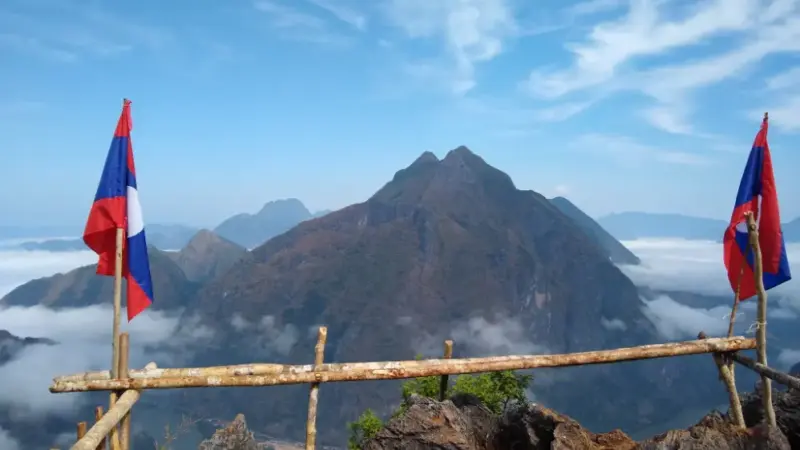
Trucks
We don’t see many cars. Most people here are on foot or by moped. Unfortunately, there are quite a few Chinese trucks that don’t like to slow down. Honking through the bend and then hoping that no oncoming traffic is coming. In the villages, everything and everyone has to give way. So also the children playing. That just can’t always go right, we think.
We don’t see many cars. Most people here are on foot or by moped. Unfortunately, there are quite a few Chinese trucks that don’t like to slow down. Honking through the bend and then hoping that no oncoming traffic is coming. In the villages, everything and everyone has to give way. So also the children playing. That just can’t always go right, we think.
Keep an eye out
So you have to pay attention in Laos and not just for traffic or during checkout. We keep a close eye on our finances and when we spent our last Kip, our balance sheet is incorrect. No less than 300,000 Kip (about 12 euros) we cannot explain. The amount is too round and too much to have overlooked. Stolen? Probably. When? We have a hunch, but we don’t know for sure. When we were in Laos for a few days, we read a lot of reviews from hotels/hostels that people have lost money. Owners who behave strangely and come into the rooms. Bags that have been turned upside down. If we had known that from day 1, we would probably have been even more careful than we already were. Now it’s just a matter of guesswork. If you go to Laos, as we say inThe Netherlands: Forwarned counts for two!
Bye Laos
And that was it. Two weeks in Laos. The beginning was more mediocre than hoped but the last few days were fantastic again. That is why we leave Laos with mixed feelings. The poverty, the waste, the spitting (we’ll spare you that), the scamming, the young children at work. Not everything is positive. Add to that the money we are missing, and Laos certainly knows its negative sides. But on the other hand we also meet a lot of nice people, nature is fantastically beautiful, the enthusiasm of the children works like doping for our tired legs. There is more than enough to enjoy. And in addition, it is also good to experience from time to time that it is not rosy everywhere in the world. We can be grateful for how good we have it.
On the 7th of February we cross the border to Vietnam where we will celebrate the Vietnamese New Year. We are very curious about that ourselves.
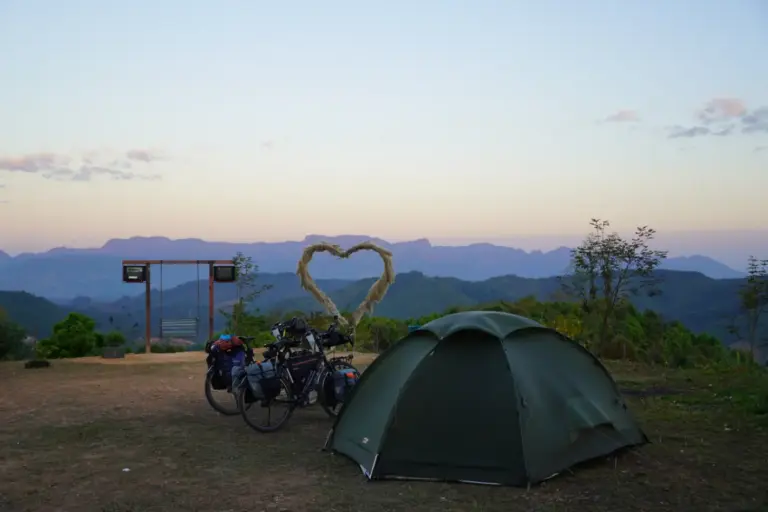
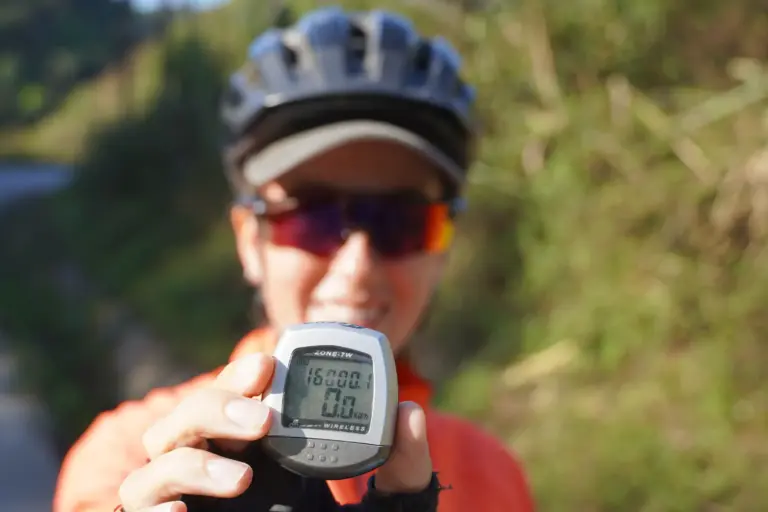
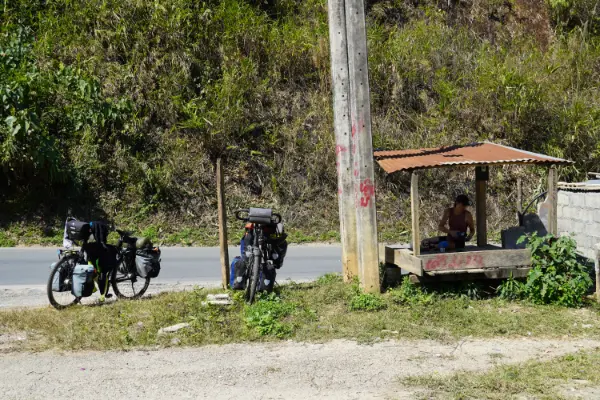

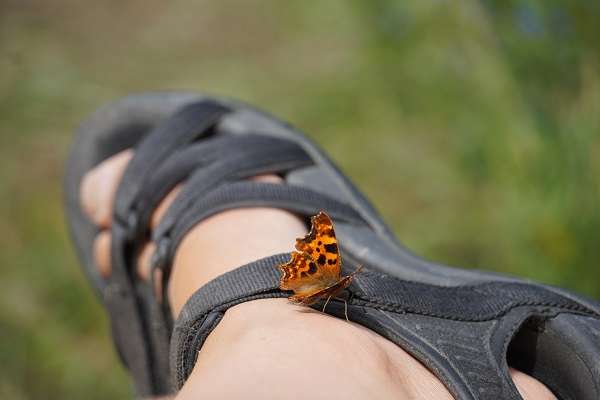
Enjoy Vietnamese’ new year
Thanks Basav!